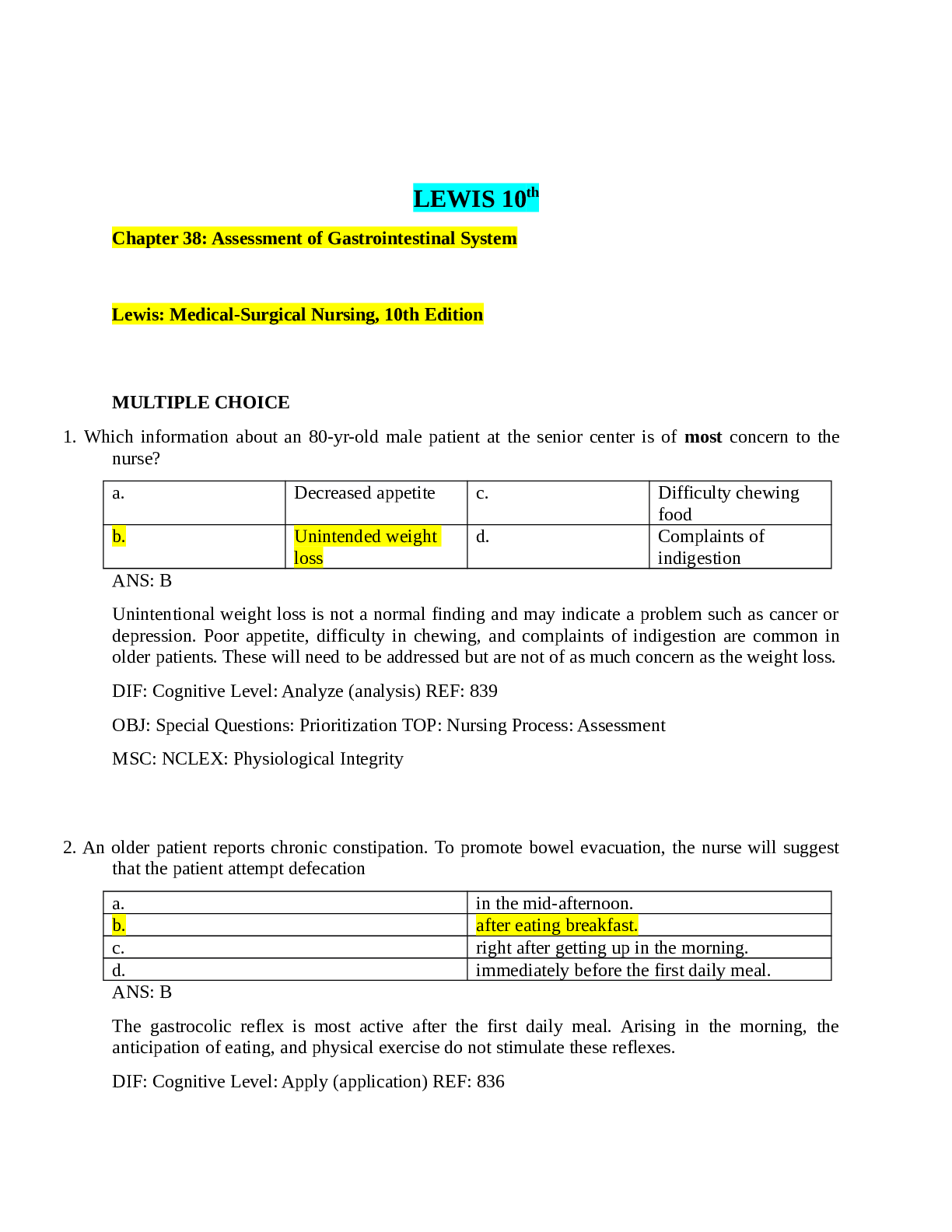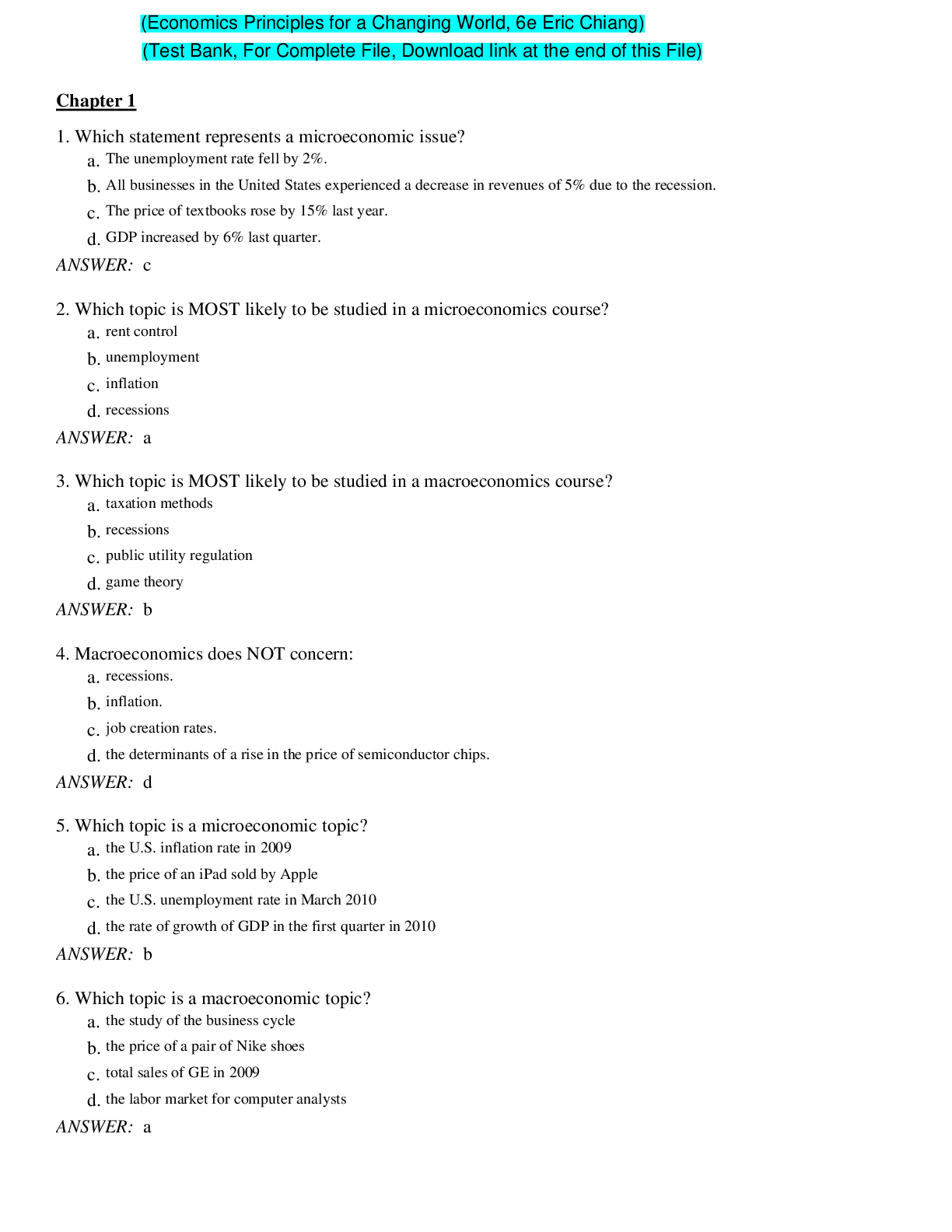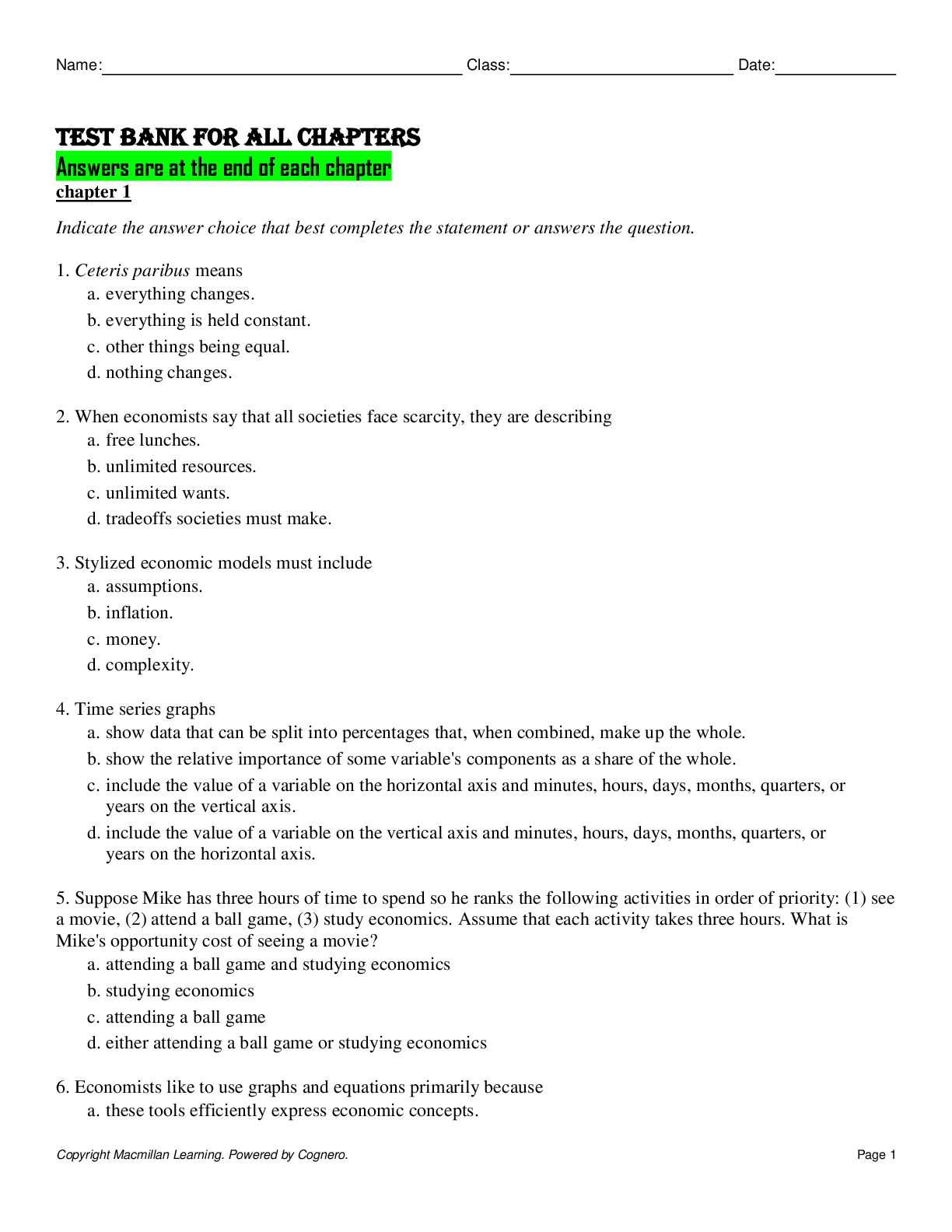Health Care > TEST BANKS > Test Bank Scientific American: Nutrition for a Changing World Chapter 7 Lipids in Health and Disease (All)
Test Bank Scientific American: Nutrition for a Changing World Chapter 7 Lipids in Health and Disease Multiple-Choice Questions
Document Content and Description Below
1. Cardiovascular disease is defined as A. hardening and narrowing of the blood vessels due to plaque development. B. a group of conditions that impairs the heart and blood vessels. C. fat deposits... that accumulate on the lining of the arteries causing damage. D. decreased blood flow to the coronary arteries resulting in a heart attack. E. elevated cholesterol, LDL, triglycerides, and decreased HDL. Answer: B Type: Knowledge Difficulty: Easy Concept: Definition Keywords: cardiovascular disease, stroke, heart disease 2. A female patient with excessive abdominal fat, LDL 165 mg/dl, HDL 45 mg/dl, and 250 mg/dl triglycerides has A. metabolic syndrome. B. a myocardial infarction. C. high risk of having cardiovascular disease. D. low risk of having cardiovascular disease. E. metabolic syndrome and high risk of cardiovascular disease. Answer: E Type: Analysis Difficulty: Medium Concept: diagnosing CVD Keywords: cardiovascular disease, metabolic syndrome, risk factors 3. Which is the correct order for atherosclerosis development? A. oxidized LDL, LDLs infiltrate the artery, foam cells, plaque, blockage of arteries B. LDLs infiltrate the artery, foam cell, oxidized LDLs, plaque, blockage of arteries C. foam cell, oxidized LDL, LDLs infiltrate the artery, plaque, blockage of arteries D. oxidized LDL, foam cell, LDLs infiltrate the artery, plaque, blockage of arteries E. LDLs infiltrate the arteries, oxidized LDL, foam cells, plaque, blockage of arteries Answer: E Type: Comprehension Difficulty: Medium Learning Objective: Summarize the events that lead to the development of atherosclerosis (Infographic 7.2) Keywords: atherosclerosis, plaque 4. Which foods are best for reducing inflammation and atherosclerosis? A. peanuts and cashews B. red wine and other alcoholic beverages C. olive oil and coconut oil D. fatty fish and seafood E. phytochemicals and dietary fiber Answer: D Type: Application Difficulty: Medium Learning Objective: Summarize the dietary strategies that reduce the risk of heart disease (Infographic 7.9) Keywords: inflammation, atherosclerosis, omega-3 fatty acids 5. Studies have shown that fatty fish and fish oil intake consistently lower cardiovascular disease risk by A. reducing inflammation and lowering serum triglycerides. B. reducing serum LDL and increasing HDL. C. increasing HDL and reducing serum total cholesterol and LDL. D. reducing serum LDL, triglycerides, and total cholesterol. E. increasing serum HDL and reducing serum LDL and heart rate. Answer: A Type: Application Difficulty: Medium Learning Objective: Summarize the dietary strategies that reduce the risk of heart disease (Infographic 7.9) Keywords: fish, inflammation, triglycerides 6. Which dietary recommendation is NOT included in the therapeutic lifestyle changes program? A. lower intake of saturated fatty acids B. increase intake of plant sterols and stanols C. increase intake of fish and fish oil supplements D. increase intake of soluble fibers E. lower intake of cholesterol Answer: C Type: Analysis Difficulty: Medium Concept: Dietary lipid recommendations Keywords: therapeutic lifestyle changes program, recommendations 7. Generally saturated fats increase serum LDL cholesterol, with the possible exceptions of A. cocoa butter and lard. B. palm oil and peanut oil. C. fat from fish and chicken. D. coconut oil and dairy. E. fully hydrogenated vegetable oils. Answer: D Type: Analysis Difficulty: Medium Learning Objective: Summarize the dietary strategies that reduce the risk of heart disease (Infographic 7.9) Keywords: saturated fatty acids, low-density lipoproteins 8. Which list contains fatty acids that reduce cardiovascular disease risk? A. omega-3 fatty acids, trans fatty acids, unsaturated fatty acids B. omega-3 fatty acids, trans fatty acids, saturated fatty acids C. omega-3 fatty acids, EPA, saturated fatty acids D. omega-6 fatty acids, omega-3 fatty acids, and hydrogenated oil E. monounsaturated fatty acids, EPA, DHA Answers: E Type: Application Difficulty: Medium Learning Objective: Summarize the dietary strategies that reduce the risk of heart disease (Infographic 7.9) Keywords: cardiovascular disease, monounsaturated fatty acids, omega-3 fatty acids 9. Nuts are considered “heart healthy” for all of the following reasons, except A. they do not contain cholesterol. B. they are rich in unsaturated fatty acids. C. they are a rich source of phytochemicals. D. they are low in calories. E. they are a rich source of antioxidant vitamins. Answers: D Type: Application Difficulty: Medium Learning Objective: Summarize the dietary strategies that reduce the risk of heart disease (Infographic 7.9) Keywords: nuts, cardiovascular disease 10. Fruits and vegetables reduce risk of cardiovascular disease by A. decreasing HDL and LDL cholesterol. B. increasing HDL and decreasing LDL cholesterol. C. decreasing oxidized LDL and blood clotting. D. decreasing inflammation. E. decreasing circulating triglycerides and total cholesterol. Answers: C [Show More]
Last updated: 2 years ago
Preview 1 out of 16 pages
.png)
Buy this document to get the full access instantly
Instant Download Access after purchase
Buy NowInstant download
We Accept:

Reviews( 0 )
$13.00
Can't find what you want? Try our AI powered Search
Document information
Connected school, study & course
About the document
Uploaded On
Sep 10, 2021
Number of pages
16
Written in
Additional information
This document has been written for:
Uploaded
Sep 10, 2021
Downloads
0
Views
171
.png)


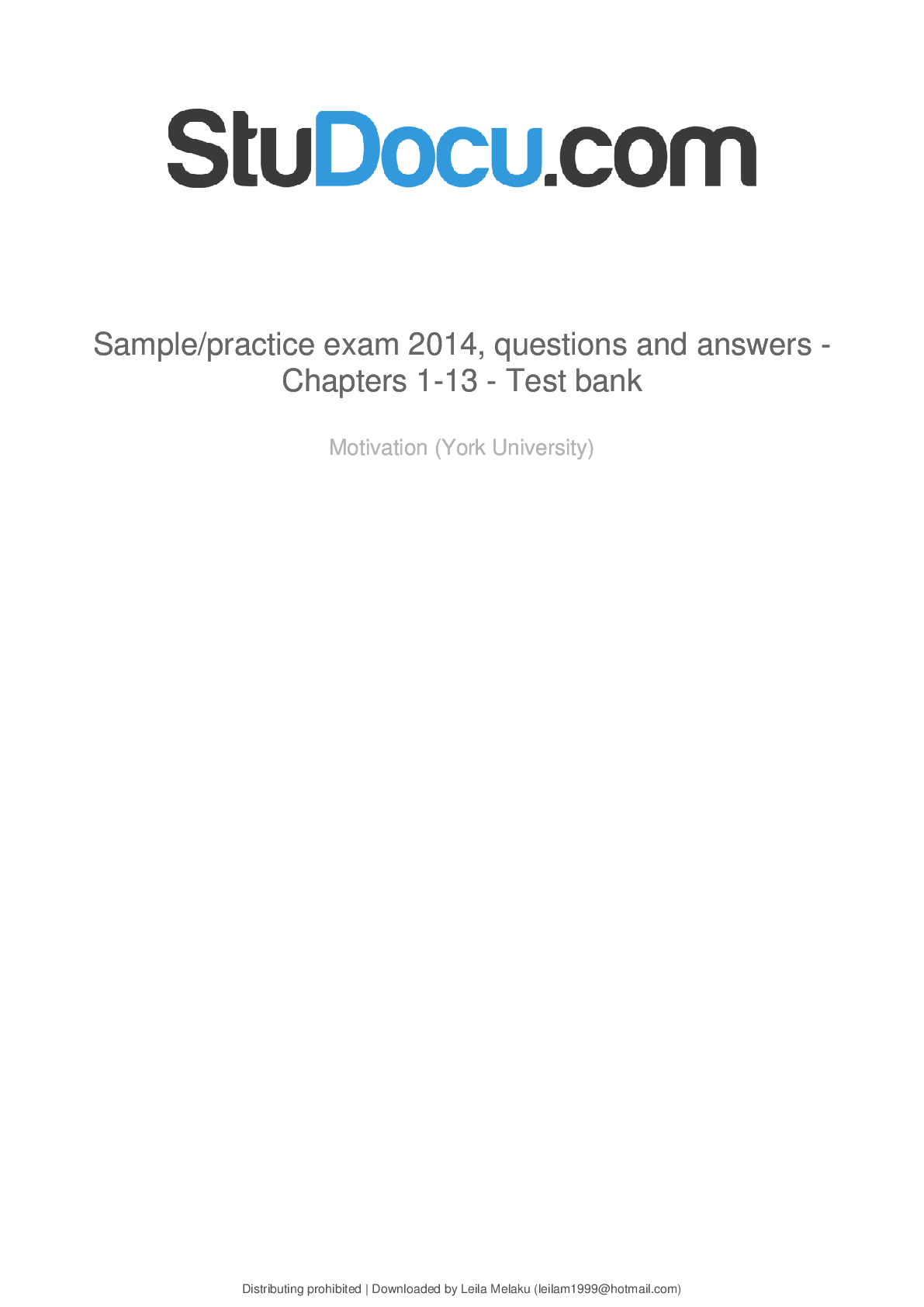
.png)

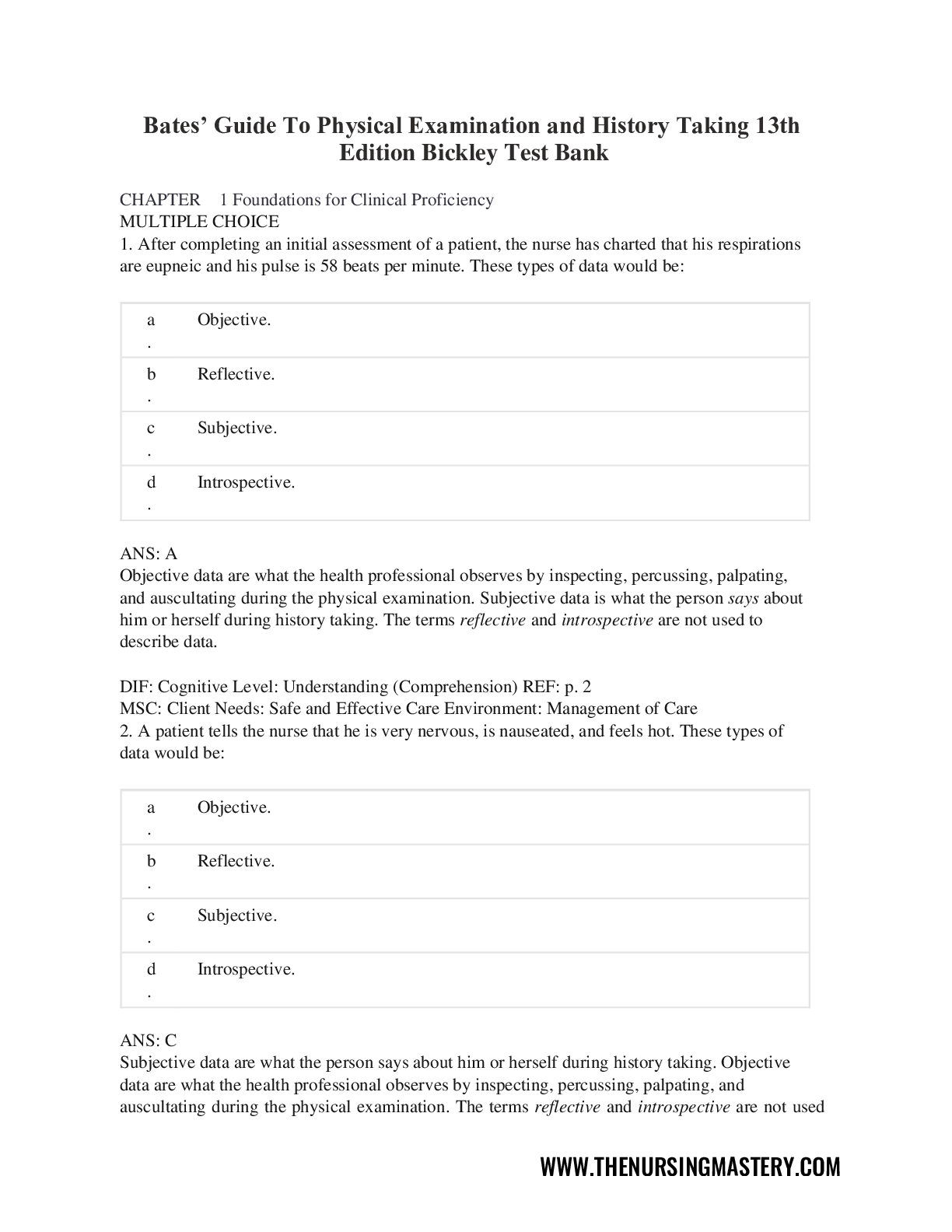

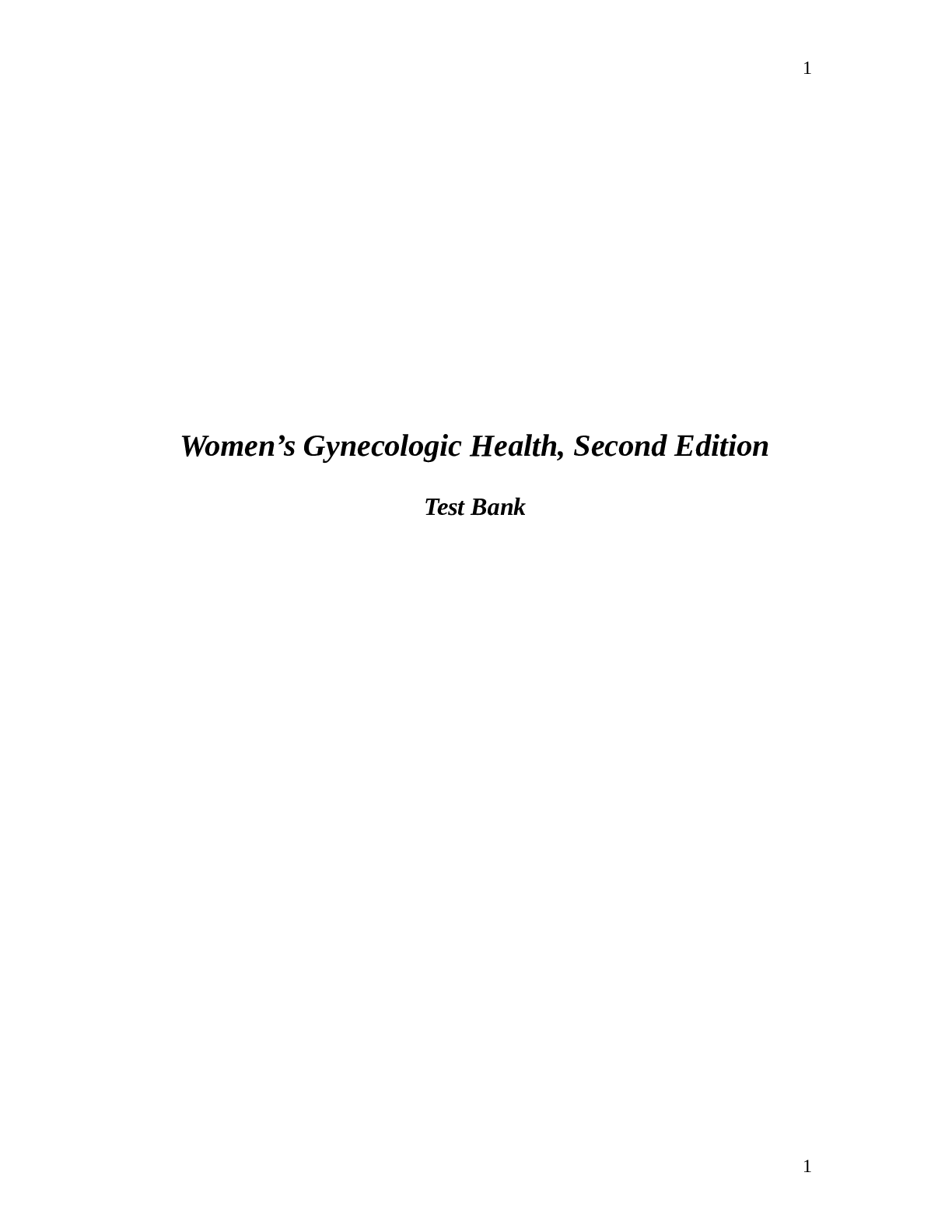


.png)
